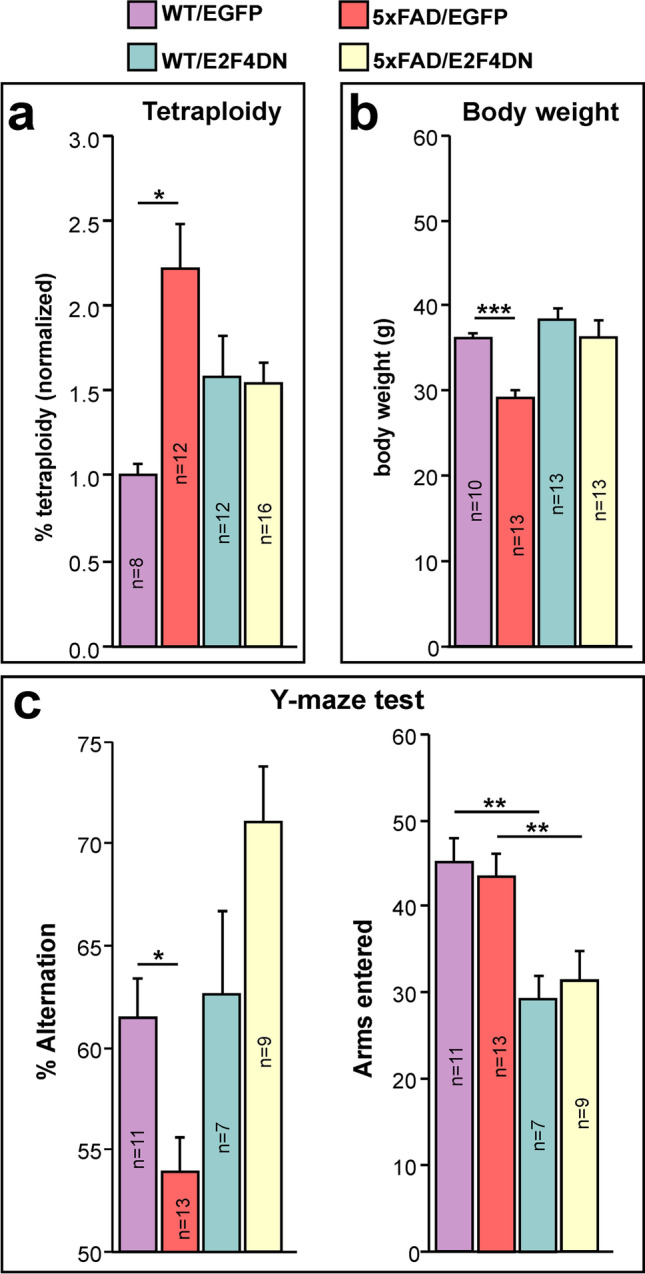Fig. 8.

Effects of E2F4DN on NT, body weight, and spatial working memory in 5xFAD mice. a NT quantification, normalized to NT levels in the cerebral cortex of 2-month-old WT mice, in cell nuclear extracts from cerebral cortex of 3-month-old littermates from crosses between 5xFAD transgenic mice and either homozygous EGFP mice or E2F4DN mice. No significant differences between WT/EGFP and WT/E2F4DN were observed (p = 0.114). WT/EGFP (5 males and 3 females), WT/E2F4DN (4 males and 8 females), 5xFAD/EGFP (6 males and 6 females), and 5xFAD/E2F4DN (1 male and 15 females). b Body weight in one-year-old male littermates from crosses between 5xFAD transgenic mice and either homozygous EGFP mice or homozygous E2F4DN mice. c Left: Percentage of alternation observed in 5-month-old male littermates from crosses between 5xFAD transgenic mice and either homozygous EGFP mice or homozygous E2F4DN mice. Random alternation (50%) indicates full memory loss. E2F4DN expression prevents spatial working memory impairment in 5xFAD mice as evaluated by the spontaneous alternation Y-maze test. Right: Number of arms entered by 5-month-old littermates from crosses between 5xFAD transgenic mice and either homozygous EGFP mice or homozygous E2F4DN mice. *p < 0.05; ***p < 0.001 (unbalanced two-way ANOVA, followed by post hoc Student’s t test)
